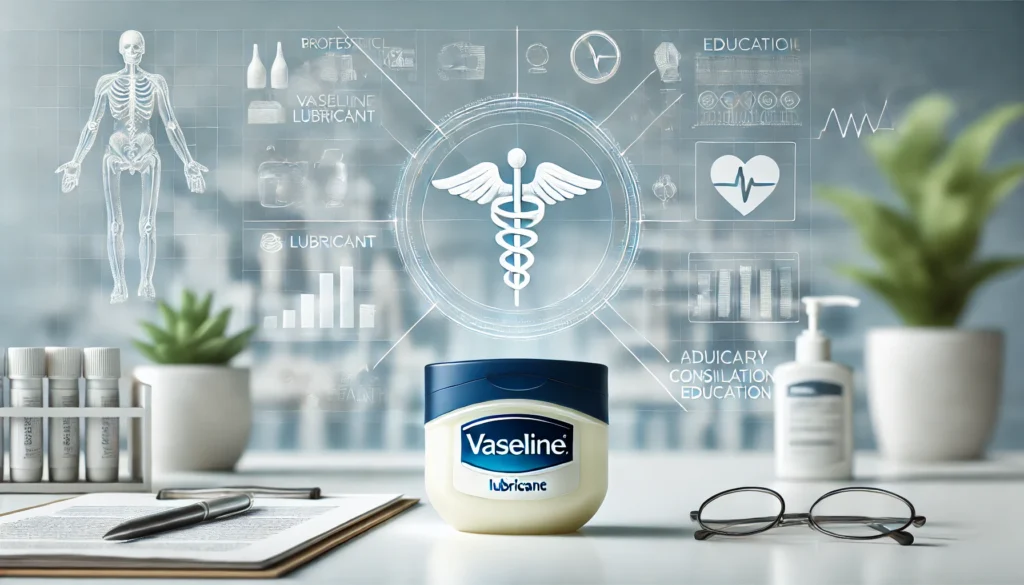Vaseline, a brand synonymous with petroleum jelly, has long been a staple in homes for skin care, wound protection, and moisturization. But can Vaseline be used as a lubricant? The answer isn’t as straightforward as it may seem. In this article, we’ll explore the uses, benefits, and risks of using Vaseline as a lubricant and suggest safer alternatives for various applications.
Properties of Vaseline That Make It a Lubricant
Vaseline is known for its unique properties that make it a potential lubricant in certain scenarios:
- Long-Lasting Texture: Its slippery, thick consistency helps reduce friction and doesn’t dry out quickly.
- Skin-Safe Composition: Petroleum jelly is generally safe for external use on the skin, making it effective for soothing dry or cracked areas.
- Moisture Barrier: Vaseline creates a protective barrier, preventing moisture loss and aiding in healing minor skin irritations.
When Can Vaseline Be Used as a Lubricant?
While Vaseline isn’t designed as a lubricant, it can work effectively in certain non-intimate situations, such as:
- Reducing Skin Chafing: For runners, cyclists, or anyone experiencing chafing in high-friction areas, Vaseline can provide temporary relief.
- Protecting Dry or Cracked Skin: Applying a thin layer of Vaseline to dry hands or heels can help reduce irritation caused by friction.
- Minor Cuts and Scrapes: Its slippery texture prevents rubbing on sensitive or healing skin.
Limitations and Risks of Using Vaseline as a Lubricant
Although Vaseline has its benefits, there are significant limitations and risks to consider:
Incompatibility with Latex Condoms
One of the most critical issues is that Vaseline weakens latex, making it unsuitable for use with latex condoms. This increases the risk of breakage, which can lead to unintended pregnancies or sexually transmitted infections (STIs).
Health Concerns
- Risk of Infections: Vaseline is not water-soluble, meaning it can linger on the skin or inside the body. This residue can trap bacteria and increase the likelihood of infections.
- Clogged Pores: Using Vaseline in sensitive areas can lead to clogged pores and irritation.
Material Degradation
Petroleum jelly can degrade silicone or rubber-based medical devices over time, reducing their effectiveness and safety.
Safer Alternatives for Lubrication
Depending on your needs, there are better options designed specifically for lubrication:
For Skin Use
- Look for water-based creams or balms designed to reduce chafing and provide long-lasting moisture.
For Intimate Use
- Water-Based Lubricants: These are safe to use with latex condoms, easy to clean, and widely available.
- Silicone-Based Lubricants: Known for their longevity, they’re excellent for prolonged activities and compatible with most condoms.
For Medical Devices
- Choose silicone-compatible lubricants explicitly designed for use with medical-grade equipment.
Tips for Safe Lubricant Use
- Read Labels: Ensure the product is compatible with the materials you’re using.
- Avoid Petroleum Jelly for Internal Use: Choose water- or silicone-based options for internal or intimate applications.
- Test for Allergies: If using a new product, do a patch test to check for skin sensitivity.
- Consult a Healthcare Professional: When in doubt, seek professional advice to ensure safe use.
Conclusion
While Vaseline can be used as a lubricant in some non-intimate situations, its limitations and risks make it unsuitable for many applications, especially those involving latex condoms or internal use. If you’re asking, “Can Vaseline be used as a lubricant?” the answer is context-dependent. Safer alternatives like water- or silicone-based lubricants are widely available and designed to meet specific needs effectively.
Understanding the pros and cons of using Vaseline as a lubricant helps you make informed choices. Always prioritize safety and the intended purpose when selecting a lubricant.
Frequently Asked Questions (FAQs)
Can Vaseline be used with condoms?
No, Vaseline weakens latex condoms, increasing the risk of breakage and reducing effectiveness.
Is Vaseline safe for sensitive skin areas?
While generally safe for external use, Vaseline may clog pores in sensitive areas, causing irritation.
Does Vaseline cause infections if used internally?
Yes, Vaseline can trap bacteria due to its non-water-soluble nature, increasing infection risks.
What are better alternatives to Vaseline as a lubricant?
Water-based and silicone-based lubricants are safer, more effective, and designed for specific applications.
Can Vaseline damage medical devices?
Yes, Vaseline can degrade silicone or rubber-based medical devices, making them less effective over time.
Recommended Article:
Dr michael 55336: Your Trusted Healthcare Provider in Glencoe, MN


